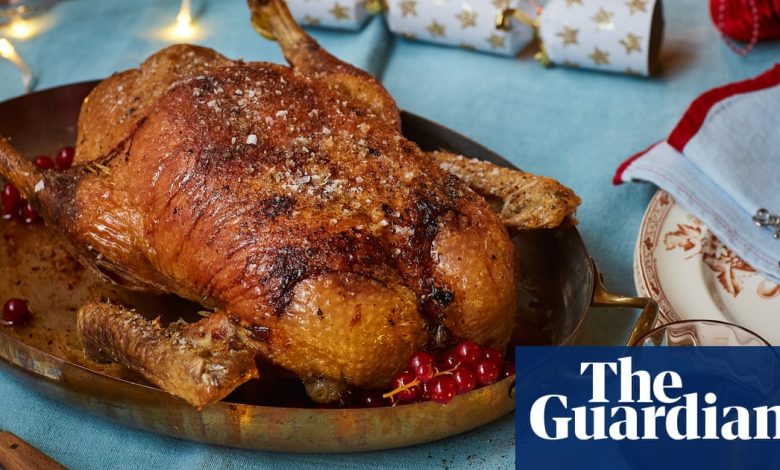Trine Hahnemann’s recipe for Danish-style Christmas roast duck | Food

CChristmas dinner is taken a lot seriously in my family and is more or less the highlight of all holidays. I start cooking two days in advance – making stock for the sauce, preparing the vegetables and starting with the pudding, which is always cold rice pudding – while people come and go, peering into pots and tasting, enjoying the smells of Christmas and port to drink and often with a Christmas movie playing in the background. All of this leads to the centerpiece of our Christmas meal, the duck, which I take out of the fridge on the morning of the 24th and prepare for the oven. I serve it with red cabbage, coleslaw, classic caramel potatoes and a nice gravy, but the crispy, sweet and tender roast duck is what ties the whole dish together.
Danish roast duck
preparation 10 min
Cook 1 hour 40 min.+
rest 10 min
Serves 4-5
1 duckabout 2½-3 kg, ideally with giblets
For the stuffing
1 beetpeeled
1 orange pippin appleor the like
1 red onionpeeled
1 hour l. coriander seeds
1 tsp allspice
3 cloves
4 prunes
10 sprigs of thyme
2 bay leaves
Sea salt and black pepper
Remove the giblets from the inside of the duck and set aside; if there is a lot of fat in the cavity, scoop some of it out and save it to melt for baked potatoes.
Then make the stuffing. Cut the beetroot, apple and onion into 2cm slices and coarsely grind the spices, then mix all the stuffing ingredients in a bowl and season. Push the stuffing mixture into the cavity of the duck, pressing it in so everything goes in there, then close the duck with meat skewers and rub the outside with more salt and pepper.
Preheat the oven to 160C (140C fan)/325F/gas 3. Roasting time for duck is 40 minutes per kilo, turning the oven to 220C (200C fan)/425F/gas 7 for the last 20 minutes. Place the duck breast side down on a wire rack set over a baking tray, then pour 500ml of water into the tin and roast for one hour. Turn the duck over so that it is now sitting breast side up and make sure there is liquid in the roasting pan at all times.
If you like, add the giblets to the juices in the roasting pan during the last 30 minutes of the roasting time (or add just the heart and kidneys and fry the liver in a little oil, season well and eat on toast for a culinary delight).
Once the duck has cooked for the allotted time, use a meat thermometer to check the temperature where the meat meets the thigh bone – it should be 68C. If it is, remove the duck and let it rest for 10 minutes; otherwise, bake it for another five or 10 minutes.
Remove and discard the giblets, if you’re using them, from the roasting tin – they’ve served their purpose – then separate the fat from the juices in the tin and save it for roasting potatoes, adding to your red cabbage, or keeping it in the fridge for more one day. The liquid now left in the pan is your sauce.
After the duck has been dead for 10 minutes, cut it into six to eight pieces, arrange on a plate and serve with the stuffing, sauce and side dishes of your choice.




